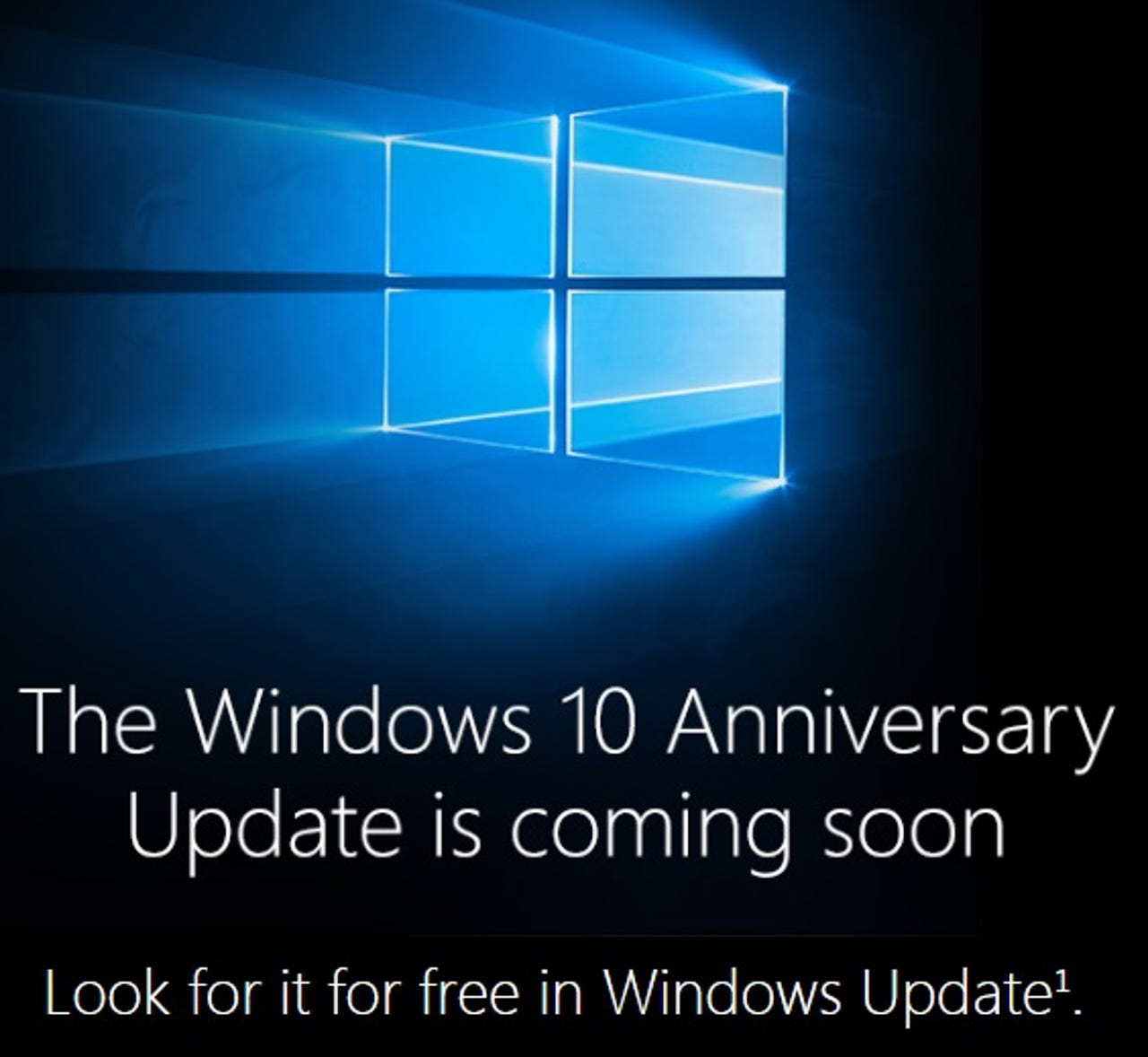Windows 10 Anniversary Update rollout may not be done until early November

If you still haven't gotten the Windows 10 Anniversary Update pushed to your device yet, there may be some valid reasons why.

Microsoft began rolling out the latest version of Windows 10, the Anniversary Update, on August 2. At that time, Microsoft officials said the rollout would be staggered, but didn't get too explicit as to how -- or how long it might take the company to push Windows 10 Anniversary to consumers and business users who are on the so-called Current Branch of Windows 10.
It's worth repeating that those who really want the Anniversary Update immediately have options to proactively go get it. (And yes, the irony is not lost on me: Now that Microsoft isn't force-feeding Windows 7 and 8 users Windows 10, people who aren't being offered the latest Windows 10 update are asking why they don't have it.)
I received a Microsoft blast email just over a week ago that included a footnote that mentioned it might take up to three months for Microsoft to push the Anniversary Update to those set up to get it. That means those currently waiting may still have another month and a half to wait.
Here's the footnote from that email blast:
"The Anniversary Update will download and install via Windows Update. The download is automatically available to you. It will begin rolling out on 2 August 2016 and may take up to 3 months to reach all users. Internet access fees may apply," said the footnote to the email I received on September 1.
Some who've seen headlines about various problems introduced by the Anniversary Update and subsequent cumulative update patches to it may be in no hurry to get the latest feature update to Windows 10. There have been reports of compatibility issues with the Anniversary Update and McAfee security software, webcams, Kindles, PowerShell Desired State Configuration feature and more.
Microsoft is throttling delivery of Windows 10 Anniversary Update, and, presumably, future updates, so company officials can keep tabs on what's working and not as the update rolls out to the many, many permutations and combinations of Windows machines where it's qualified to run. This is part of the reason why Microsoft is obsessed with telemetry and has been for the past few years.
I've seen lots of rumors percolating lately that Microsoft no longer does its own Windows testing and doesn't have any Windows testers left since the company cut a bunch of them a couple years ago as part of one of the waves of layoffs Microsoft has had. Microsoft changed the way it handled the testing function in Windows in 2014 to shift more of the testing to the Windows developers working on certain features, which resulted in the company cutting a number of its existing dedicated testers.
I've asked my contacts about this and have been told there definitely are hundreds, if not thousands, of Windows testers working for Microsoft. Windows Insider testers are providing testing help through bug reporting during the development process, too, but they are not the only Windows testers. There are also corporations doing their own internal Windows 10 testing, plus hardware and software partners doing the same (hopefully) in advance of Microsoft's release of Windows 10 feature updates.
I asked Microsoft for more information on how it's working to improve quality and reliability in Windows 10, moving forward. I received this statement from a spokesperson:
"Ensuring our customers have a positive experience with our products and services is incredibly important to us and we take the quality and reliability of our software seriously. When we deliver updates to more than 350 million devices, those builds have gone through extensive internal and external testing. The vast majority of our customers have a high-quality, positive experience with our updates and our goal is an issue-free experience for everyone. For those who don't, we want to hear from them so we can fix any issues as quickly as possible. We encourage our customers to contact Customer Support."
With unhappy users having an ever-increasing number of ways to make their complaints known through social channels and forums, I'm hoping that Microsoft will take steps to let users know the potential impact of Windows 10 issues and be upfront about when they can expect workarounds and fixes. More blog posts like this one with resources for checking and improving application compatibility would be welcome (especially ahead of new Windows 10 feature updates), as well.